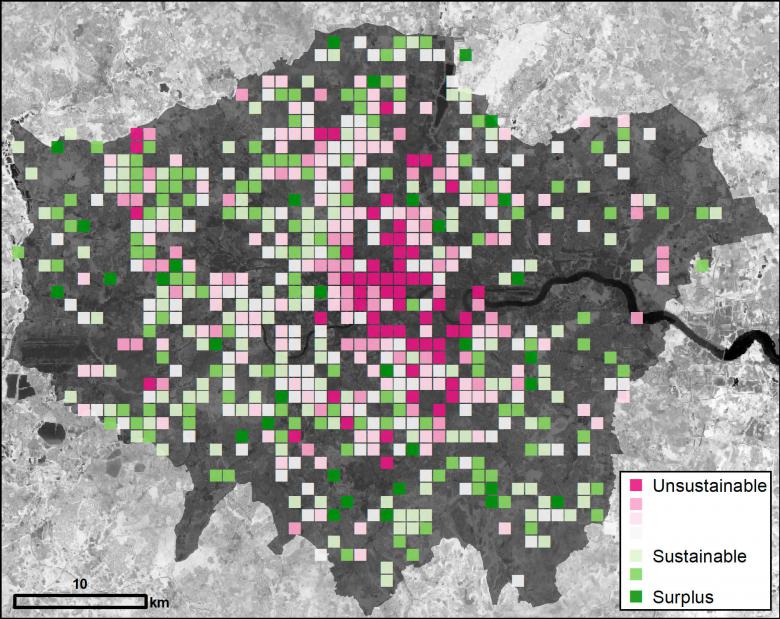October 1st 2020
According to a recently published report* by the Royal Botanic Gardens, Kew - evidence indicates that London (particularly central locations) has too many hives.
Or that beekeeping in the locations shown in the following map is unsustainable, the report estimates that 13.28 hectares (0.13 km2) of London greenspace is required per colony or 7.5 colonies per km2.

Many urban beekeepers see their activities as environmentally important and reducing deficits of pollinators, however the number of urban hives has increased dramatically in the last two decades, with potential negative outcomes for wild species.
This is a serious problem for bee conservation because honey bees can outcompete wild bees by monopolizing floral resources.
“Some bees are ‘oligolectic’, which means they feed on pollen of just a few species, often within the same genus, which exposes them to greater risk of starvation if their host plant is not available” explains Prof. Stevenson.
For further information:
Download the State of the World's Plants and Fungi 2020 report (PDF)
*
Sources: State of the World's Plants and Fungi 2020, RBG Kew
Based on paper: Stevenson, PC, Bidartondo, MI, Blackhall‐Miles, R, et al. The state of the world’s urban ecosystems: What can we learn from trees, fungi, and bees?. Plants, People, Planet. 2020; 2: 482– 498. https://doi.org/10.1002/ppp3.10143